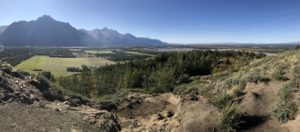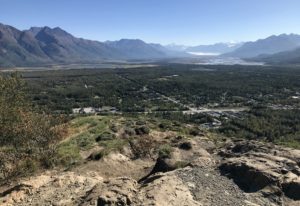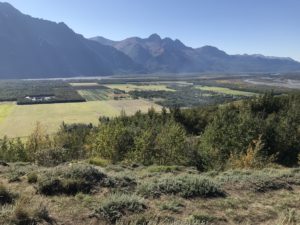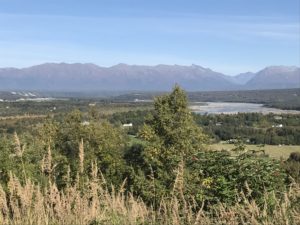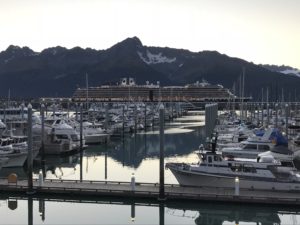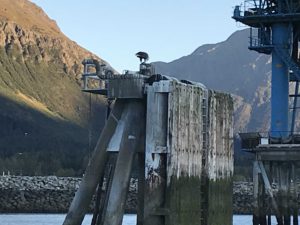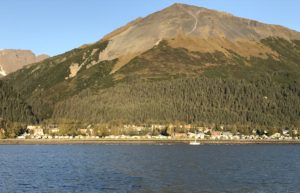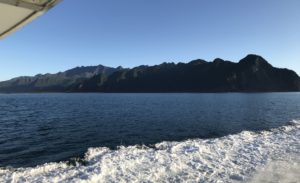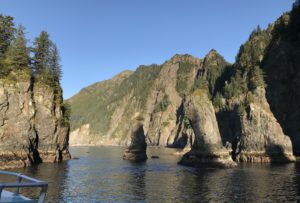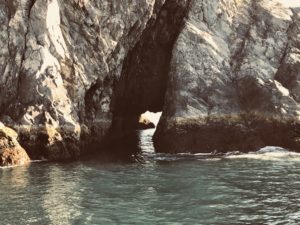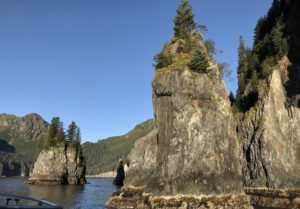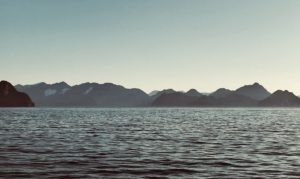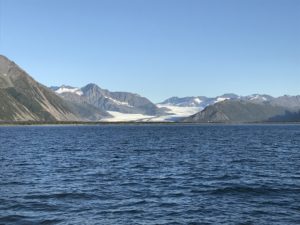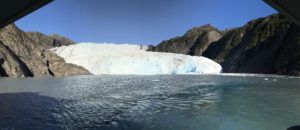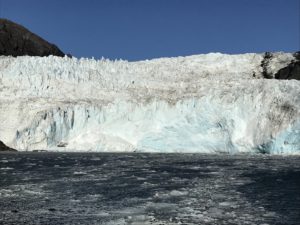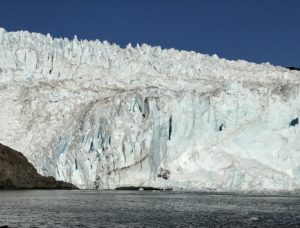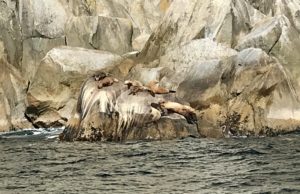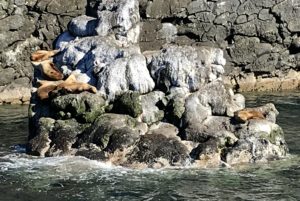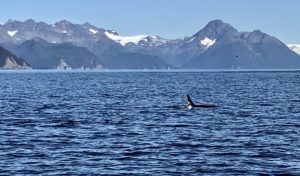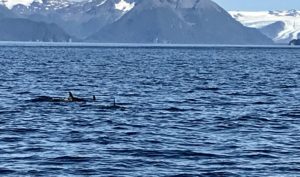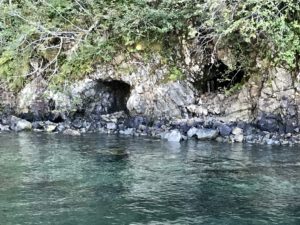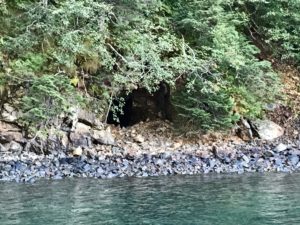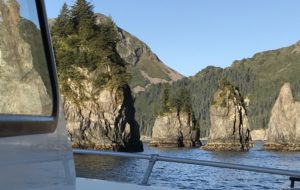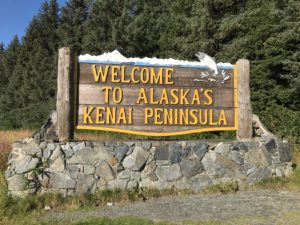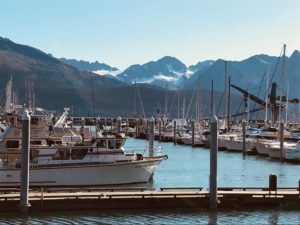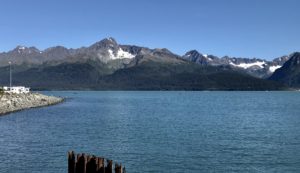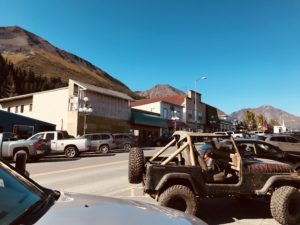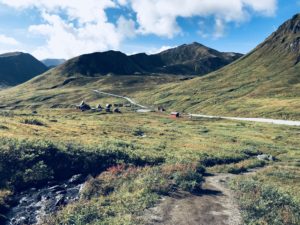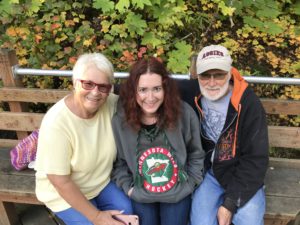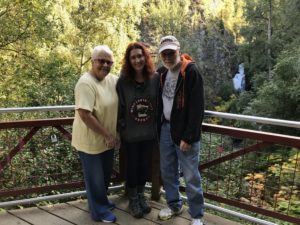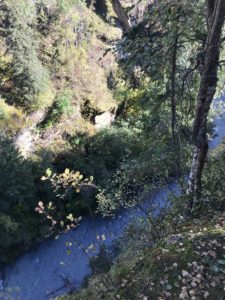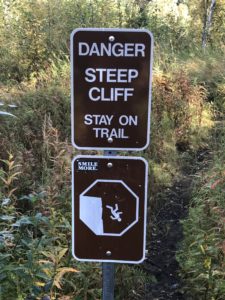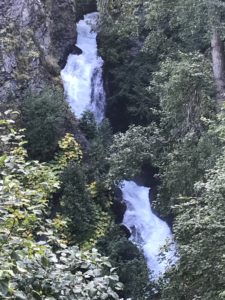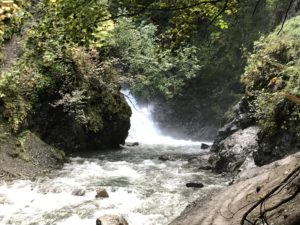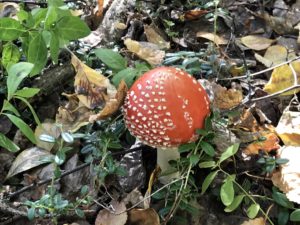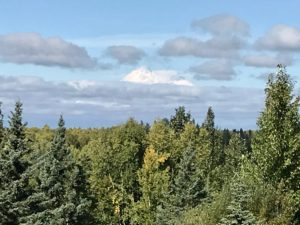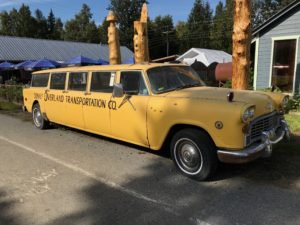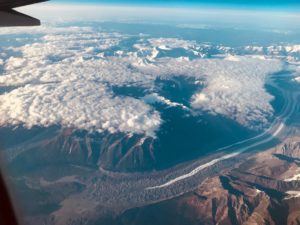
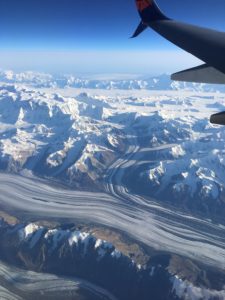
Ok, so it’s been awhile. Sue me. 🙂
I’m on a trip to Alaska with my sister, brother-in-law, and niece. My niece, Steph, is with us, but is actually returning to Palmer, Alaska where she lives and teaches.
I don’t sleep on planes, (it’s not for lack of trying), so when granted a window seat I often pass the time contemplating all manner of stuff wondering around in my head, as well as what I see below. Here are a few pics from my little window on the world below. 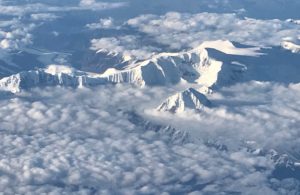
My contemplative time on this aerial journey was spent wandering back and forth between two musings, one being a consistent favorite of mine. In my travels I have spent hours and hours thinking about and imagining what it was like for early natives, pilgrims, settlers, and mountain men who lived and journeyed into vast areas of wilderness. Flying over northern British Columbia and the Northwest Territories one can literally fly for hours and not see evidence below of humans. I know there are at least roads down there somewhere, but I don’t see them. Even today, crossing this wilderness would not be for the faint of heart. When I think about what it was like one to two hundred years ago and before, it rocks my imagination. But I am so completely drawn into it. At the risk of sounding trite, I’ve often thought I was born about 100 years to late. There is a lot to revere about the mettle of the people who came before us.
So what’s the other one you wonder. Funny you should ask.
I just started a book titled “Breathing Under Water”, written by Richard Rohr, who I’ve read before. It was recommended by my great friend Tim, who had it recommended by another friend of ours, and so it goes. After reading just the Introduction, spending a couple of hours meditating on it, and then reading it again, I feel comfortable passing this recommendation on to anyone out there reading my humble ramblings.
At the great risk of too much simplification, it seeks to equate the teachings of Jesus with the teachings of the Twelve Step Program. Sin and addiction, salvation and recovery, just to name a few. I had to go back and make some notes, something that’s not typical for me, so I could keep track of the many things that spoke to me in just the Intro. Even if you don’t think of yourself as a very spiritual person, or don’t directly identify with either of these two things, this is a very thought provoking book.
Writing this book became a written organization of a series of talks Rohr had been giving over the years. And the talks were all inspired by, and rooted in, a poem by Carol Bieleck, r.s.c.j., that I’ll leave you with for now. (Sorry, I don’t know what those letters stand for).
I built my house by the sea. Not on the sands, mind you; Not on the shifting sand. And I built it of rock. A strong house by the sea. And we got well acquainted, the sea and I. Good neighbors. Not that we spoke much. We met in silences. Respectful, keeping our distance, but looking our thoughts across the fence of sand.
And then one day, – and I still don’t know how it happened – the sea came. Without warning.
Without welcome, even. Not sudden and swift, but a shifting across the sand like wine, less like the flow of water than the flow of blood. Slow, but coming. Slow, but flowing like an open wound. And I thought of flight and I thought of drowning, and I thought of death. And while I thought the sea crept higher, till it reached my door. And I knew then, there was neither flight nor death, nor drowning. That when the sea comes calling you stop being neighbors Well acquainted, friendly-at-a-distance, neighbors And you give your house for a coral castle, And then you learn to breathe underwater.
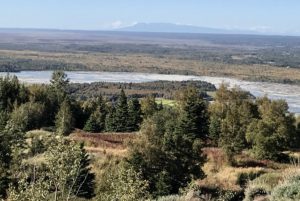 Bud and I hiked to the top of Bodenburg Butte which is another great hiking spot right near Palmer where Steph lives. By comparison this one has a considerably higher degree of difficulty than the hike we took at Thunderbird Falls. In the middle of the hike the Forest Service has installed intermittent flights of stairs because it’s so steep. On my brother’s Fitbit App it said we went up, in that section, the equivalent of 74 stories. But in spite of workout, the view from the top is something else. As I’m fond of saying, it was worth the trip.
Bud and I hiked to the top of Bodenburg Butte which is another great hiking spot right near Palmer where Steph lives. By comparison this one has a considerably higher degree of difficulty than the hike we took at Thunderbird Falls. In the middle of the hike the Forest Service has installed intermittent flights of stairs because it’s so steep. On my brother’s Fitbit App it said we went up, in that section, the equivalent of 74 stories. But in spite of workout, the view from the top is something else. As I’m fond of saying, it was worth the trip.